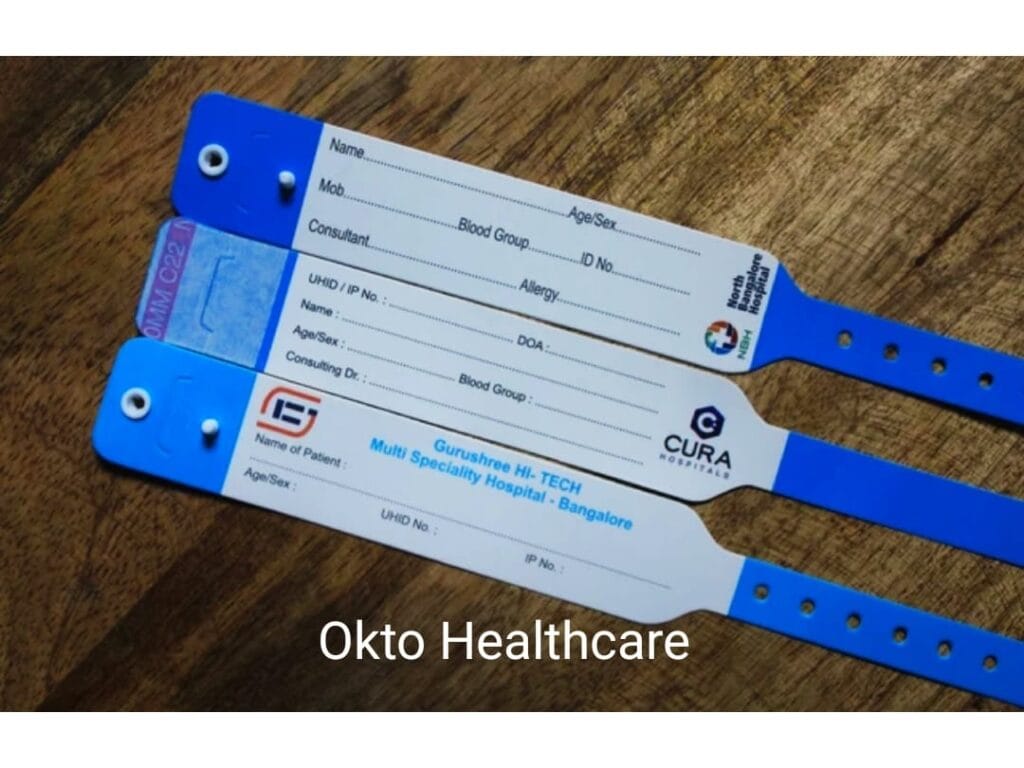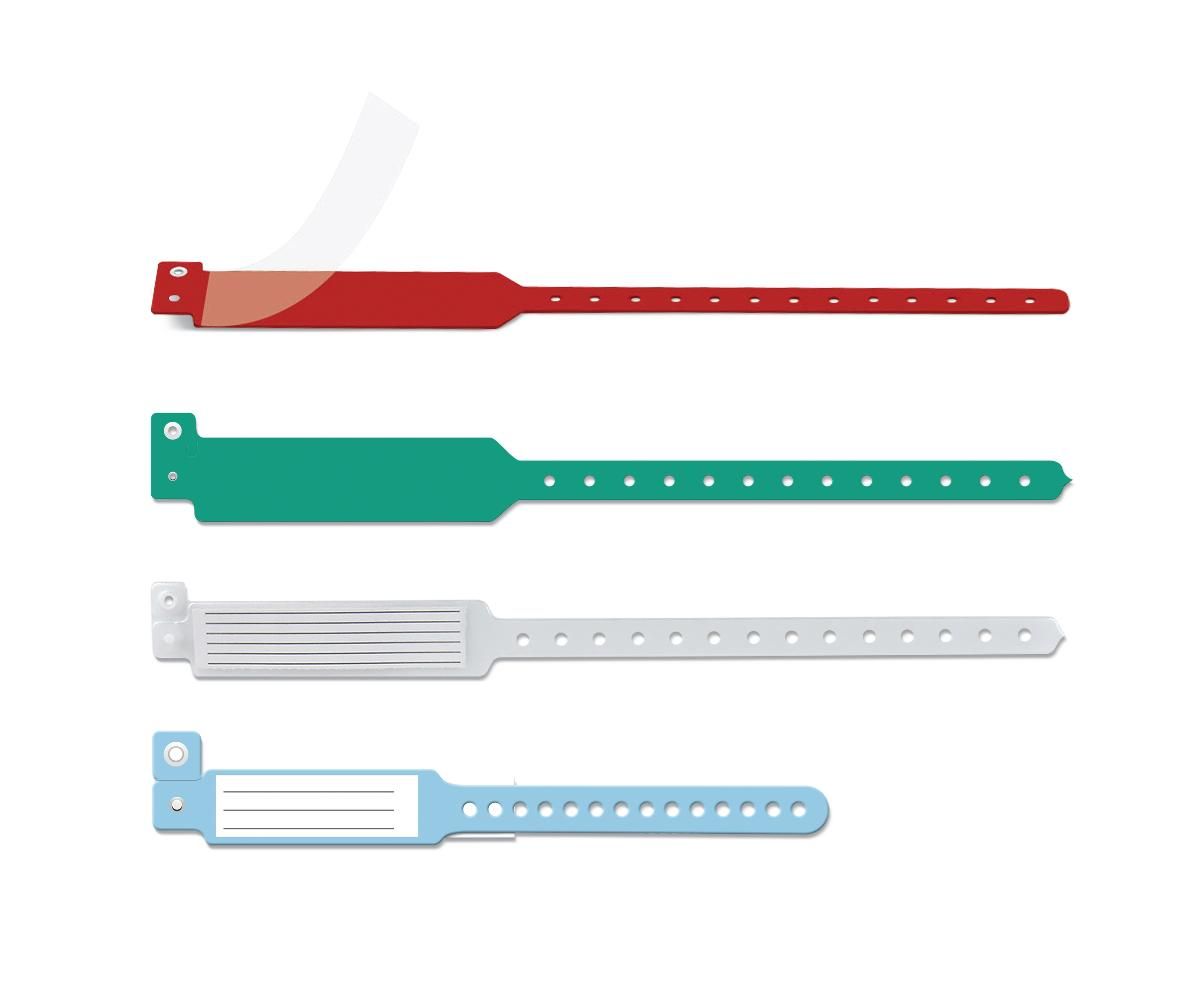Patient Identification Band: A Vital Device for Every Healthcare Provider
Patient Identification Band: A Vital Device for Every Healthcare Provider
Blog Article
Enhancing Security: The Importance of Individual Recognition Bands in Healthcare
In the realm of health care, the effectiveness of client identification bands can not be overstated, as they offer as a basic guard versus misidentification and subsequent errors. As we explore the multifaceted duty of these bands, it comes to be obvious that their significance extends past plain recognition, raising inquiries concerning finest practices and future innovations in patient safety.
Overview of Individual Identification Bands
Patient recognition bands play a vital function in guaranteeing the security and accuracy of person treatment in healthcare setups. These bands, usually endured the wrist or ankle joint, work as a critical device for confirming person identity, thereby lessening the risk of errors in treatment, medicine administration, and various other healthcare treatments. Made from durable products, individual recognition bands frequently consist of important details such as the client's name, day of birth, medical record number, and barcodes or QR codes for scanning.
The execution of client recognition bands is vital in different medical care environments, consisting of medical facilities, outpatient facilities, and long-lasting treatment institutions. They add to an organized approach in individual monitoring, allowing healthcare experts to swiftly and properly identify individuals, specifically in high-pressure situations where quick decision-making is essential.
Additionally, the usage of these bands is straightened with governing criteria intended at improving client safety and security - Patient Identification Band. By making sure that each individual's info is conveniently easily accessible and conveniently proven, doctor can preserve a high requirement of care, decrease the incidence of unfavorable occasions, and cultivate a society of safety and security within medical care establishments
Advantages of Accurate Recognition
Precise identification is fundamental to boosting person safety and security and care high quality in health care settings. It works as the initial line of protection against mistakes that might result in adverse client end results. By making certain that each individual is properly identified via dependable methods, such as client identification bands, healthcare carriers can considerably reduce the threat of misidentification, which can cause inappropriate therapies, medication mistakes, and even medical mix-ups.
Furthermore, exact individual identification facilitates reliable communication amongst healthcare groups. When all personnel can consistently recognize individuals, they can share crucial details more successfully, leading to much better coordination of care. This is especially important in emergency scenarios where timely interventions are critical.
Additionally, precise recognition supports compliance with governing standards, consequently reducing the risk of legal effects for medical care facilities. It cultivates trust between individuals and doctor, as people really feel more secure understanding that their identities are being secured.

Common Obstacles Dealt With
Making certain effective individual recognition in healthcare settings provides an array of challenges that can jeopardize security and care top quality. Patients may show up in a state of complication or distress, making accurate recognition image source difficult.
One more obstacle is the dependence on human consider identification procedures. Health care specialists might inadvertently ignore or misunderstand identification protocols, particularly in high-stress atmospheres such as emergency departments. This can cause errors, consisting of the management of inaccurate therapies or drugs.
Technical concerns also posture challenges. Although electronic health and wellness document (EHR) systems are created to enhance individual recognition, system blackouts or customer mistakes can interrupt the process. Furthermore, the physical design of person ID bands can bring about readability concerns, particularly in situations where bands are damaged or covered.
Last but not least, irregular training among personnel regarding recognition procedures can lead to gaps in expertise and method. Dealing with these challenges is critical for boosting individual safety and making certain that recognition bands serve their desired function effectively.
Ideal Practices for Application
To effectively apply individual identification bands in health care settings, companies must take on a diverse approach that prioritizes innovation, training, and standardization assimilation. Standardization entails developing clear protocols for important site the layout, application, and usage of recognition bands across all departments. This ensures uniformity and lessens the threat of errors connected to differences in band types or classifying methods.


Training is necessary for all medical care staff to ensure they comprehend the importance of exact person identification, how to properly apply and check out recognition bands, and the treatments to comply with in case of discrepancies. Regular workshops and correspondence course can strengthen this knowledge and advertise a society of safety.
Innovation integration plays an essential duty in improving the performance of client recognition bands. Making use of barcode scanning or RFID innovation can streamline the recognition procedure, permitting real-time confirmation of individual identifications. Furthermore, digital wellness record systems should be set up to consist of alerts for mismatches between the recognition band and person data.
Future Trends in Client Safety And Security
As healthcare remains to progress, the focus on patient security is likely to intensify, driven by developments in innovation and a better understanding of systemic threats. Arising trends indicate a change in the direction of even more incorporated systems that leverage data analytics, expert system, and maker discovering to boost person recognition procedures. These technologies can help identify potential safety issues before they escalate, thereby reducing errors associated with misidentification.
Moreover, the implementation of blockchain technology may revolutionize how patient information is firmly shared amongst health care service providers, making sure that identification bands are continually precise and up-to-date. This will certainly not only enhance patient safety yet additionally assist in seamless communication throughout multidisciplinary groups.

Furthermore, the growing concentrate on individualized medication is anticipated to affect person safety protocols. By integrating market and hereditary details right into recognition systems, medical care specialists try these out can customize therapies better, lessening the dangers of negative responses because of misidentification.
Final Thought
In conclusion, person identification bands serve as an essential element in enhancing safety and security within healthcare settings. Eventually, the continued focus on robust recognition protocols will certainly add to improved patient outcomes and total safety and security in health care setups.
In the realm of medical care, the effectiveness of patient recognition bands can not be overemphasized, as they offer as a basic secure against misidentification and subsequent mistakes.Client recognition bands play a vital role in making sure the safety and precision of patient care in medical care settings. Made from resilient products, patient identification bands usually include necessary information such as the client's name, date of birth, clinical record number, and barcodes or QR codes for scanning.
By making sure that each person is correctly determined with reliable means, such as individual recognition bands, healthcare companies can dramatically minimize the threat of misidentification, which can lead to inappropriate therapies, medication errors, and also medical mix-ups.
In conclusion, patient identification bands serve as a crucial component in improving safety and security within medical care settings. Patient Identification Band.
Report this page